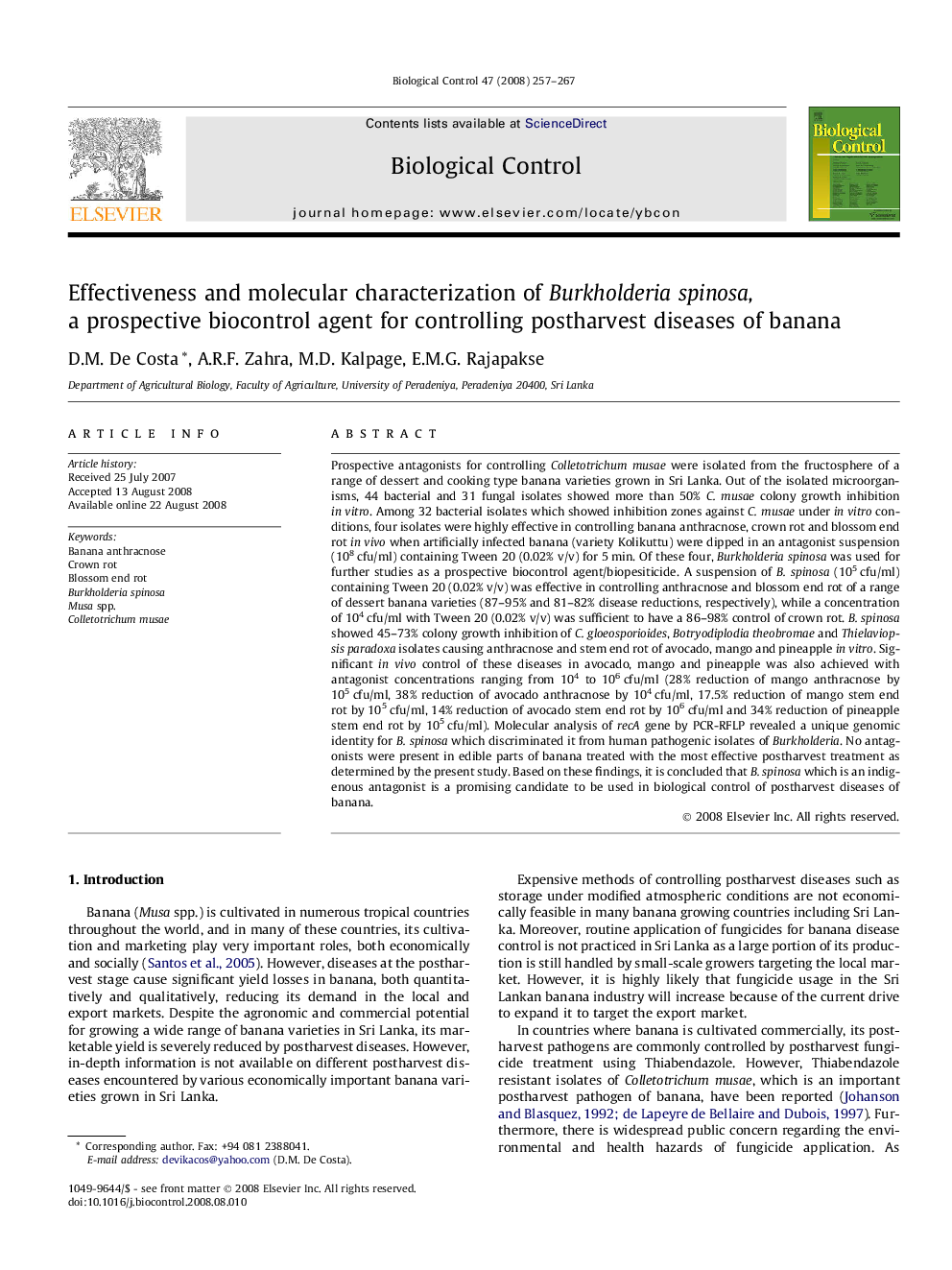| Article ID | Journal | Published Year | Pages | File Type |
|---|---|---|---|---|
| 4504784 | Biological Control | 2008 | 11 Pages |
Prospective antagonists for controlling Colletotrichum musae were isolated from the fructosphere of a range of dessert and cooking type banana varieties grown in Sri Lanka. Out of the isolated microorganisms, 44 bacterial and 31 fungal isolates showed more than 50% C. musae colony growth inhibition in vitro. Among 32 bacterial isolates which showed inhibition zones against C. musae under in vitro conditions, four isolates were highly effective in controlling banana anthracnose, crown rot and blossom end rot in vivo when artificially infected banana (variety Kolikuttu) were dipped in an antagonist suspension (108 cfu/ml) containing Tween 20 (0.02% v/v) for 5 min. Of these four, Burkholderia spinosa was used for further studies as a prospective biocontrol agent/biopesiticide. A suspension of B. spinosa (105 cfu/ml) containing Tween 20 (0.02% v/v) was effective in controlling anthracnose and blossom end rot of a range of dessert banana varieties (87–95% and 81–82% disease reductions, respectively), while a concentration of 104 cfu/ml with Tween 20 (0.02% v/v) was sufficient to have a 86–98% control of crown rot. B. spinosa showed 45–73% colony growth inhibition of C. gloeosporioides, Botryodiplodia theobromae and Thielaviopsis paradoxa isolates causing anthracnose and stem end rot of avocado, mango and pineapple in vitro. Significant in vivo control of these diseases in avocado, mango and pineapple was also achieved with antagonist concentrations ranging from 104 to 106 cfu/ml (28% reduction of mango anthracnose by 105 cfu/ml, 38% reduction of avocado anthracnose by 104 cfu/ml, 17.5% reduction of mango stem end rot by 105 cfu/ml, 14% reduction of avocado stem end rot by 106 cfu/ml and 34% reduction of pineapple stem end rot by 105 cfu/ml). Molecular analysis of recA gene by PCR-RFLP revealed a unique genomic identity for B. spinosa which discriminated it from human pathogenic isolates of Burkholderia. No antagonists were present in edible parts of banana treated with the most effective postharvest treatment as determined by the present study. Based on these findings, it is concluded that B. spinosa which is an indigenous antagonist is a promising candidate to be used in biological control of postharvest diseases of banana.
